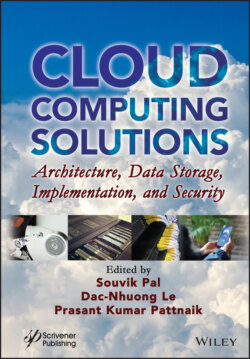Читать книгу Cloud Computing Solutions - Группа авторов - Страница 88
3.3 Architectural Workflow and Co-ordination of Multiple Activities
ОглавлениеThis section includes architectural workflow when an application is deployed on the cloud platform. Workflow style is presented here to help you easily understand the steps involved in executing and managing an application. The concept of workflow is not new. Workflow technologies first emerged in the mid-1970s with simple office automation prototypes at Xerox PARC and the Wharton School of the University of Pennsylvania. In the early 1990s, workflow and office automation gained new life.
According to Dave Green and John Evdemon, workflow is defined as follows:
“Workflow is fundamentally about the organization of work. It is a set of activities that coordinate people and/or software. Communicating this organization to humans and automated processes is the value-add that workflow provides to our solutions. Workflows are fractal. This means a workflow may consist of other workflows (each of which may consist of aggregated services). The workflow model encourages reuse and agility, leading to more flexible business processes.”
In their research article, Monika Bharti and Anju Bala [15] have described different categories and different functionalities. They are as follows:
“Workflow works behind cloud to manage resources, various clients, cost constraints. The concept of workflow is proposed by fixed work procedures with conformist activities. The tasks are divided into subtasks, roles, rules and processes to execute and observe the workflow; workflow system boosts the level of production of organization and work efficiency. Various types of workflows are business workflow, abstract workflow, concrete workflow, scientific workflow and so on. Business workflow allows controlled flow of execution and simplifies workflow management. It provides support for security, reliability, transactions, and performance. Its performance can be increased by use of faster server. Its workflow lifecycle is design, deployment, execution, monitoring and finally refinement. Scientific workflow supports large data flows and needs to do parameterized execution of large number of jobs. It is also to monitor and control workflow execution including ad-hoc changes. The input given to workflow is written in languages like Java, Perl, Python and the output generated is the workflow. These workflows are managed and coordinated by workflow management system, which provides the end users with the required data and the appropriate application program for their tasks. It allocates tasks to end-user based only on the performance of constraints like control flow, data flow, transition conditions or pre- and post-conditions. The issues that arise with workflow and its management are workflow scheduling, fault tolerance, energy efficiency and so on. Workflow scheduling maps and manages the execution of inter-dependent tasks on the distributed resources. Fault tolerant is when a system’s service failure can be avoided when faults are present in the system.”
